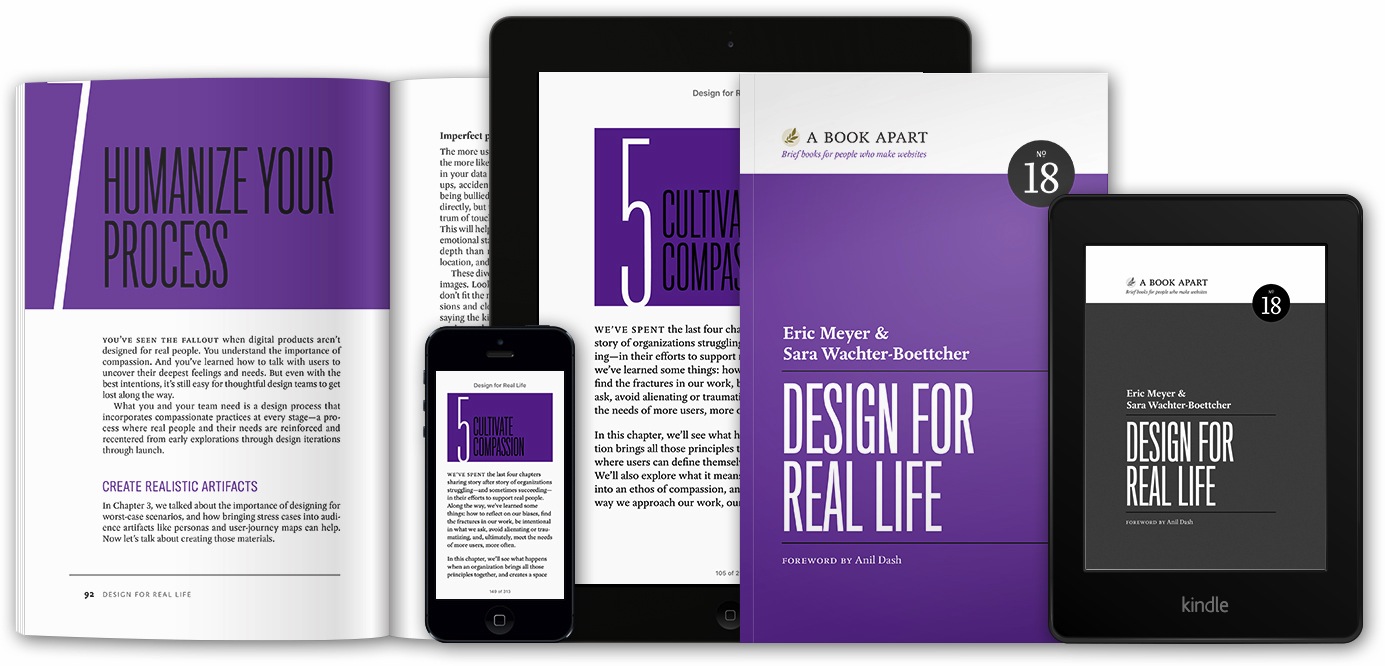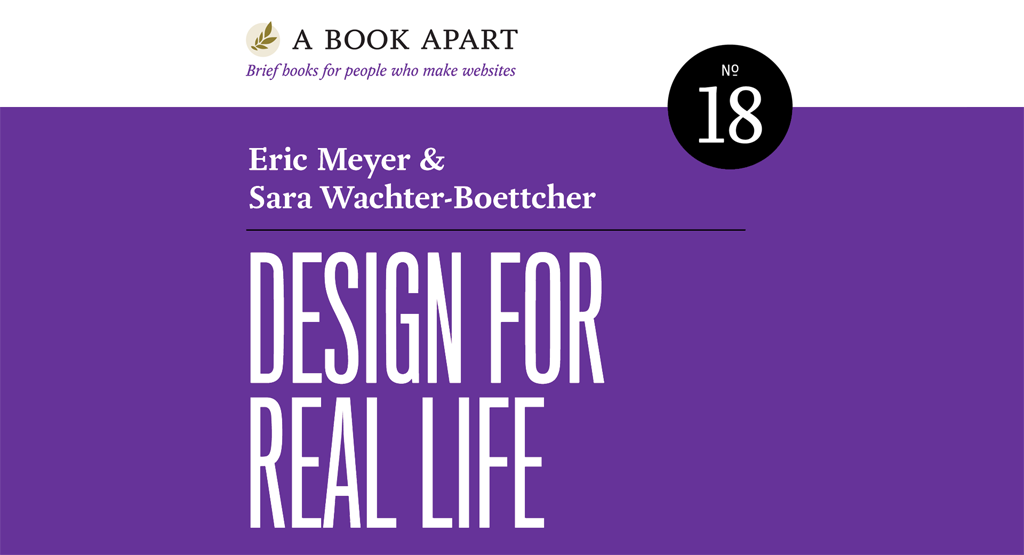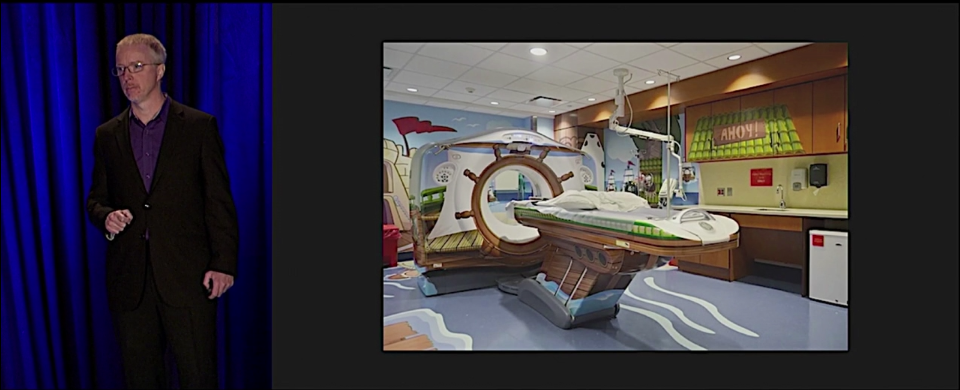If you do something you love for long enough, it gets into your bones. But more than that, the things adjacent to it do as well.
Since I got started on the web, very nearly 22 years ago now, I’ve never really seen myself as a designer. Granted, I did some visual design in the early days, because anyone who set up a web site back then had to be the designer: there was nobody else. No graphic designers would deign to look at the web, and no “web designers” yet existed. We were Web Masters because we had to be, drawing buttons and laying out content along with writing code and doing UX and UI and IA and everything else.
So I did design when I had to, but I always knew I wasn’t a capital-D Designer. I knew this in the same way I knew I was not a boulder nor an odor: it wasn’t a failing or even a lack, but just what was true and even unremarkable. I was a code monkey who knew his way around Photoshop and could mimic what he saw around him decently enough, but I didn’t have the creative vision or training or, really, inclination to generate my own, unique work.
As we passed out of that epoch of the web, I was more than content to stop trying to design and instead be an enabler of design. My efforts to teach HTML and CSS had twinned, helical aims: to help anyone who wanted to create a web site share their thoughts, and to help any designer who wanted to create a visual effect share their vision. I was a technical author, a developer, a sometime observer of design, but never a Designer. I knew Designers by then, and I knew they possessed a skill and focus I did not.
Which was okay. After all, I possessed a skill and focus they did not. Our work was complementary.
What I didn’t realize was that, over all those years, as the knowledge I shared seeped into their bones and became second nature, the same thing was happening in reverse.
For the past few months, I’ve been managing a design project, getting a ton of help from Jason Santa Maria; but I’ve also been the annoying client, making unreasonable demands of everyone involved. I insisted on changes of direction partway through, and coped with changes of understanding at other points in the process. I refused to listen to reason at one point, and yielded to reality at another. For most of it, I compared font faces and sizing, trying to decide which I liked best, telling Jason I wished I could have a little of option A, a little of option B, a dash of option C, struggling to put into words what I could almost see.
Among my friends, I’m vaguely infamous for not being able to tell, at a glance, the difference between Helvetica and Arial. I’ve seen the detailed analyses of the two, and if I had the exact same run of text in each face, sitting side by side, I could probably do a credible job of figuring out which was which, but give me a standalone block of sans-serif text in Ariatica or Helvetial and my odds of knowing which it is are literally no better than a coin flip.
And yet, there I was, staring at the same layout set in various font faces, feeling the sense of each, obsessed with spacing and intervals and kerning, examining which had the best italics while trying to decide if italics should even be used, if their use conveyed the right message. I scrutinized the spacing between blocks of text, the alignment of fragments of information, the rhythm of the entire piece, every bit of content. It wasn’t enough that it be passable, or decent, or even good; it had to be right. I focused on all the details as well as the overall picture with a will and intensity I had never felt before.
It wasn’t easy. I massaged my temples as the stress of needing to make exactly the right choice overwhelmed me; I paced around my office, glaring at the alternatives on the monitor every time I passed by; I felt tears of frustration rise as I ran into yet another setback and knew that the final result would not be everything I had originally wanted it to be. I stood in someone else’s office and rode herd on their archaic software setup, literally telling them where and how many times to click, because that’s what was necessary to get the job done properly. I wrote and rewrote emails to the various parties in the project, masking my battered spirit as best I could while still being clear about where things stood and where I wanted them to go.
Not, as I say, by myself: Jason was invaluable to getting me off to the right start, keeping me on the right track, and helping me through the setbacks. I doubt I could have done a tenth as well without him. But as we progressed, I increasingly felt like I knew what his answers to my questions would be. My inexperience and fear of error and just plain fear meant I kept checking in with him, but with every iteration, I felt more confident that I already knew the right answers. In a lot of cases, I made the changes I was already sure he would make, and Jason’s feedback confirmed that I had done right.
Over two decades, I had slowly, unwittingly absorbed everything I needed for this project. It had seeped into me, creeping out of a thousand Keynote slides and a million words, written and spoken, from my friends and their friends and all the people they looked up to and quoted.
Gradually, I had become a capital-D Designer. I had a very specific intent to render, and with help and focus, I made the end product as reflective of my intent as possible. I knew when the design felt wrong, but more importantly, I knew when the design felt right. And I could see, at first with Jason’s help but increasingly on my own, how to get from one to the other.
This morning, the result was unveiled — literally unveiled, ritually, at the direction of our congregation’s rabbi. A block of sparkling silver-blue granite carved with a few words of English and Hebrew. A compact arrangement of text bearing more emotion and meaning than anything I have ever done, horrifying and beautiful, set flush into the earth of Cleveland Heights, where similar markers will one day be set for me and for my wife.
Everything I absorbed over all those years, everything I learned by choice or by chance, and most of all the help I received from everyone who’d ever shared their knowledge and insights with me, all made that possible. Made me a Designer.
Thank you all.
This article was originally published at The Pastry Box Project on 7 June 2015.



